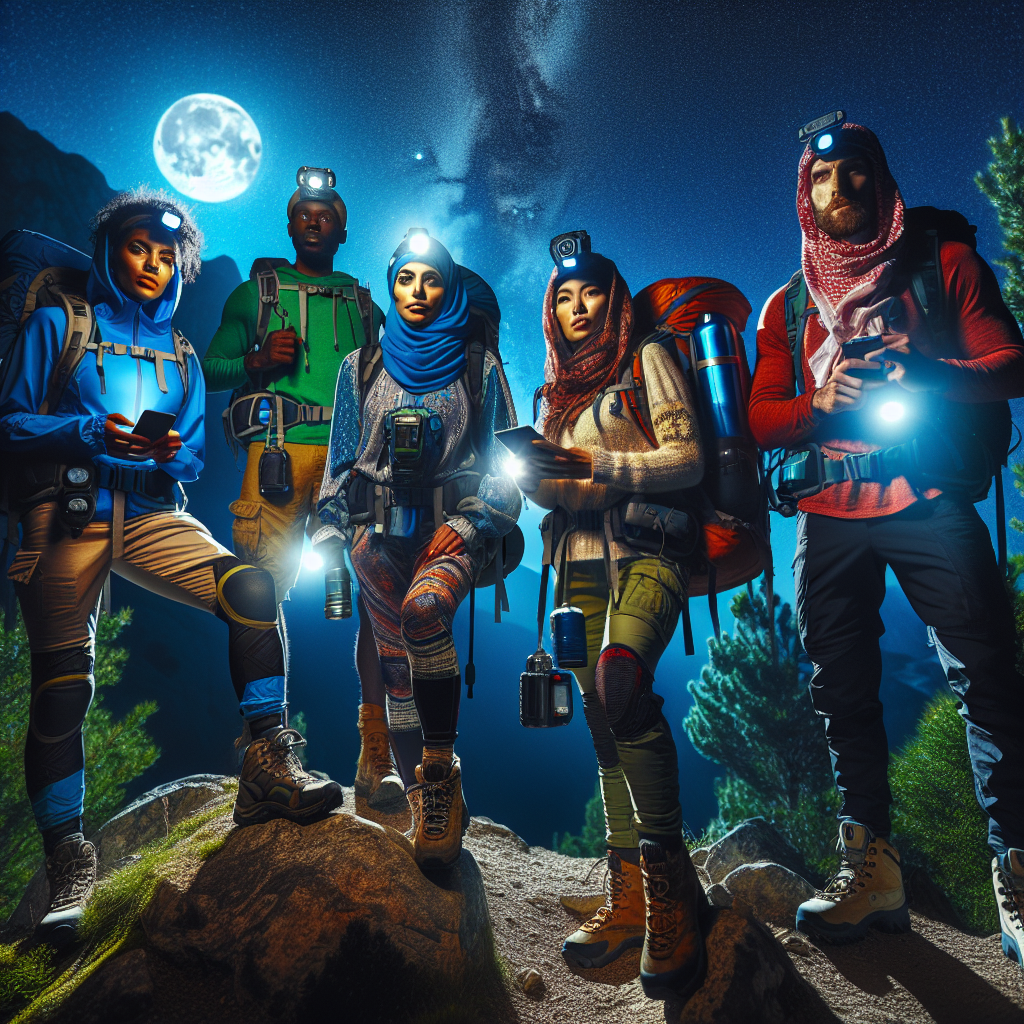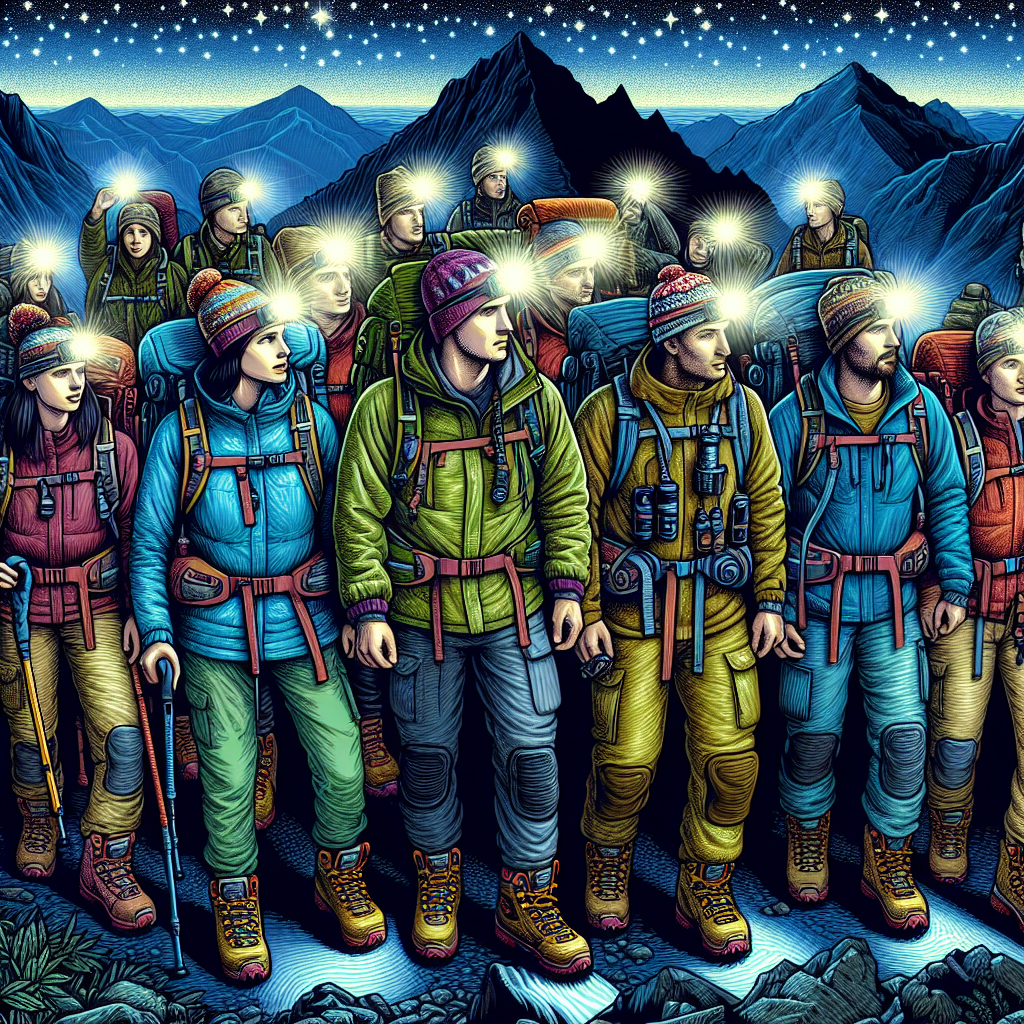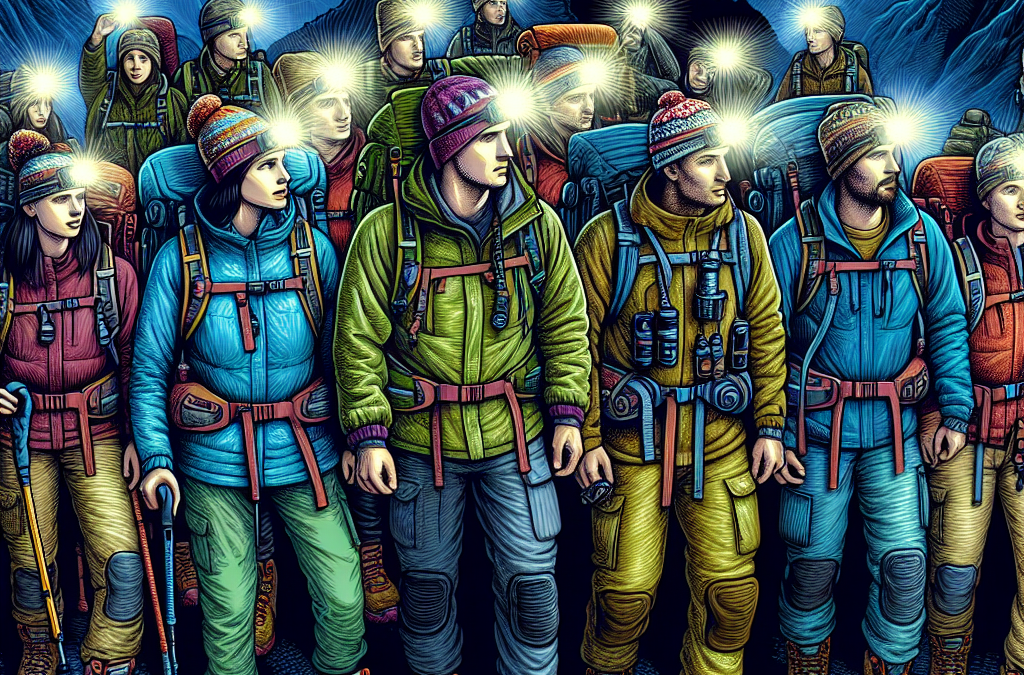Venturing into the alluring wilderness under the moonlight can be an extraordinary experience, almost magical. However, the thrill of night hiking shouldn’t steer you away from paying attention to your safety and the gear you carry. “Night Hiking: Safety Tips and Gear Essentials” is an informative guide that brings together some tactical advice and essential gear suggestions that help maximize enjoyment while ensuring safety during your nighttime exploration. With this guide by your side, you’re equipped to confidently traverse trails after sunset and relish all the breathtaking views starlit landscapes have to offer.

Understanding Night Hiking
Night hiking is a unique adventure that brings an entirely new dimension to the activity you know and love. Let’s delve a bit deeper into what this entails.
Definition of Night Hiking
Simply put, night hiking is the activity of hiking during nighttime. This isn’t just a daytime hike continued into the night; it’s a completely different experience where you navigate your way under a starlit sky, with the moon as your primary source of light. It offers a unique perspective as sights, sounds, and even smells change once the sun goes down.
Popular Locations for Night Hiking
There are countless hiking trails around the globe, but not all of them are suitable for night hiking. A few popular destinations include Bryce Canyon National Park in Utah, where the dark skies are perfect for stargazing; Mount Sinai in Egypt, a pilgrimage spot known for its sunrise views; and the Blue Mountains in Australia, favored for its exciting night life and luminous glow worm sightings.
Why People Choose Night Hiking
People opt for night hiking for a variety of reasons. Some enjoy the solitude and quiet that nightfall brings, while others are in it for the thrill and unique challenges of nocturnal navigations. For many, it’s all about the view, with a night sky full of stars offering a sight rarely seen in today’s urban environments.
The Dangers of Night Hiking
Despite its appeal, night hiking also comes with its share of dangers that shouldn’t be understated.
Visibility Challenges
The most obvious challenge of night hiking is the lack of sunlight. It’s harder to see your surroundings, observe changes in the terrain, or spot potential hazards until you are right on top of them, which increases the risk of accidents.
Wildlife Encounters
Depending on your location, you could run into nocturnal wildlife, some of which could be dangerous. Hikers should always be aware of the typical wildlife in the area and know how to respond to encounters.
Temperature Drops and Weather Changes
Temperatures tend to drop significantly after sunset, and weather conditions can rapidly change. Hypothermia is a real risk if you’re not adequately prepared.
Tripping and Falling Hazards
The chance of trips and falls increases drastically when you can’t see the ground clearly. It’s easier to misjudge a step, stumble over a rock or root, or slip on loose ground.
Personal Safety Precautions
Taking precautions can drastically increase your safety while night hiking.
Importance of Physical Fitness
Even if you’re fit from regular daytime hiking, night hiking adds a new level of physical demand. Ensure you’re in good health and top condition before undertaking a night hike.
Knowing Your Trails
Familiarize yourself with a trail during the day before attempting it at night. This way, you’ll have a better idea of its layout and terrain, which can be challenging to perceive in the dark.
Hiking in Groups
There’s safety in numbers. Hiking in groups not only provides assistance if someone gets injured but also helps deter potential wildlife encounters.
Informing Others of Your Plans
No matter how safe you think your hike will be, always let someone else know your plans: where you’re going, which route you’re taking, and when you plan to return. This ensures that someone will know if you’re late returning and can raise the alarm if necessary.
Choosing the Right Time and Season for Night Hiking
Selecting the right time and season can enhance your night hiking experience.
Understanding Moon Phases for Better Visibility
The moon can provide a great deal of natural light. Hiking during a full moon or as it begins to wane can give you better visibility without the need for artificial light sources.
Weather Considerations
Good weather is crucial for night hiking. Clear skies not only make for better star viewing but also minimize the risk of sudden weather changes.
Seasonal Changes and its Impact
Seasonal changes affect both weather conditions and wildlife activity. Early fall or late spring can be ideal for night hiking since temperatures are milder, and the wildlife is usually less aggressive.

Necessary Skills for Night Hiking
Night hiking requires specific skills to ensure safety and enjoyment.
Navigational Skills
Even with a familiar trail, navigating in the dark poses significant challenges. Learning how to use a compass and read topographical maps can be invaluable.
First-Aid and Emergency Response
An understanding of basic first-aid procedures can potentially turn a severe accident into a minor one. Also, knowing how to signal for help in an emergency can be lifesaving.
Understanding Animal Behavior
Understand the typical behavior of wildlife in your hiking area. Some animals can be aggressive, while others may be scared off easily. Knowing this can prevent unnecessary encounters and ensure your safety.
Essential Gear for Night Hiking
The right gear can enhance your safety and comfort significantly during a night hike.
Importance of Lighting Equipment
Bring a robust, reliable source of light. Headlights are an excellent option as they allow for hands-free operation.
Clothing and Footwear
Wear layers to counter the temperature drops, and reliable, comfortable footwear to protect against the unseen hazards of the trail.
Navigation Tools
Physical maps and compasses are irreplaceable. GPS can be a helpful addition, but always have the traditional tools as a fallback.
Emergency and Survival Kit
Pack an emergency and survival kit which should include medical supplies, fire-starting tools, emergency blanket, and a whistle or signal mirror for emergencies.
Food and Water for Night Hiking
Staying hydrated and maintaining energy levels is crucial during a night hike.
Hydration Considerations
Always carry ample water. The physical exertion combined with the cool night air can dehydrate you more quickly than you may realize.
Energy boosting Snacks
Snacking on high-energy foods like trail mix, protein bars or jerky, can maintain your energy levels throughout the hike.
Meal Planning for Longer Hikes
For longer treks, carefully plan your meals. Opt for lightweight, high-calorie options like dehydrated meals that just need boiling water.
Respecting the Environment
When hiking, it’s your responsibility to minimize your impact on the natural environment.
Leave No Trace Principles
Stick to the ‘leave no trace’ rules – take only photos, leave only footprints. Keep your campsites clean, and avoid disturbing plants or animals.
Nighttime Wildlife and Habitat Conservation
Avoid disturbing any animals you encounter and maintain a respectful distance. Night is their active time, and human disturbance can stress them.
Maintaining Trail Integrity
Stick to the established trails even if visibility is low, to reduce damage to the environment.
Photographing and Documenting your Night Hike
Commemorate your night hike by documenting it in photos and writings.
Night Photography Tips
Night hiking offers unique photography opportunities. Capture a glowing landscape by slowing your shutter speed, and don’t forget a tripod to stabilize your camera.
Keeping a Hiking Journal
Journaling your experiences can be therapeutic and helpful covering everything from the trail conditions to the wildlife you spotted, and how you felt under the moonlit sky.
Documenting Wildlife Encounters Safely
If you spot wildlife, maintain a safe distance and respect the animal’s space. Use a good quality zoom lens to capture the encounter without disturbing them.
Recovering from a Night Hike
Once you’ve completed your hike, proper recovery is critical.
Proper Sleep Post-Hike
Ensure you get plenty of sleep post-hike. Your body restores itself during sleep, speeding recovery.
Recovery Meals and Hydration
Rehydrate and refuel your body with balanced meals containing protein, healthy fats, and complex carbohydrates to replenish energy stores and support muscle recovery.
Addressing Injuries and Seeking Medical Attention
Even minor injuries should be treated promptly to prevent complications. Seek medical attention immediately for any significant injuries or if symptoms don’t improve.
Night hiking can indeed be an extraordinary experience, but it comes with its own set of challenges and dangers. Stay prepared and be respectful of the environment, so you can safely enjoy all the beauty and excitement that night hiking has to offer.

